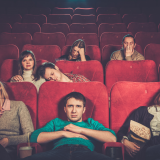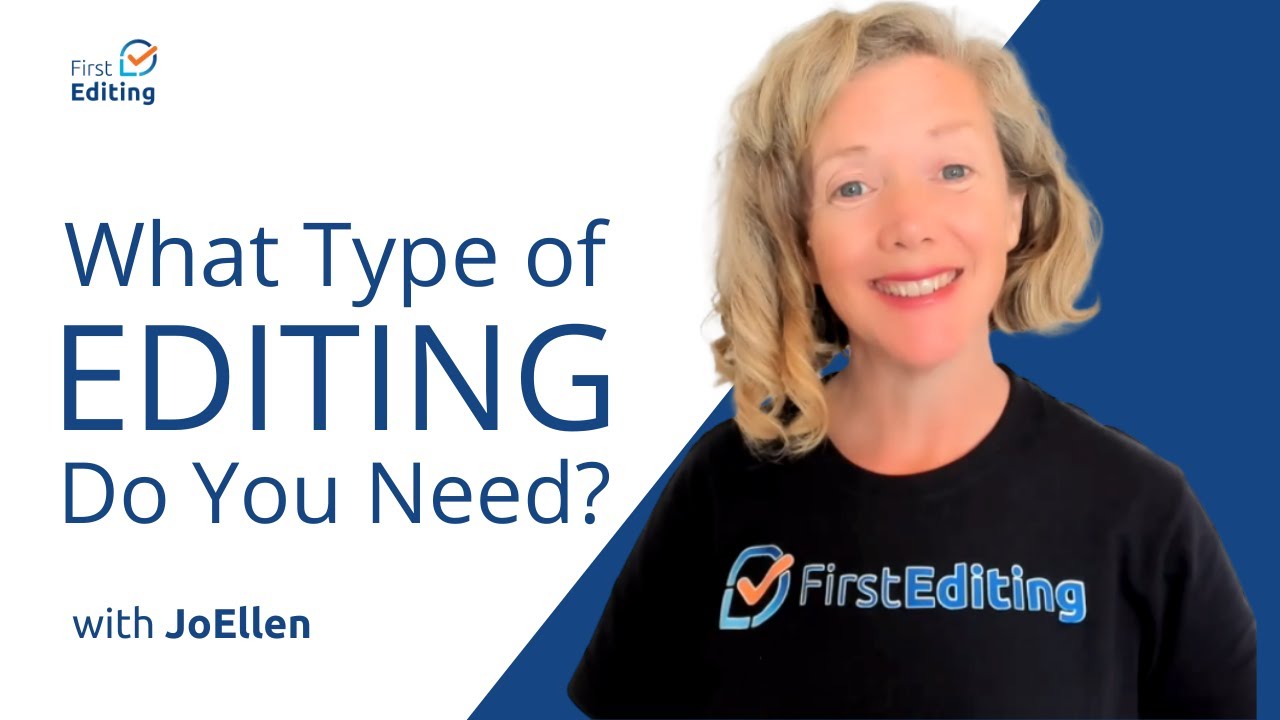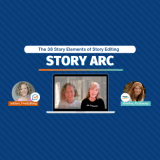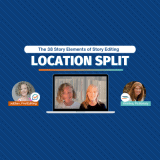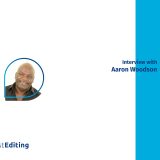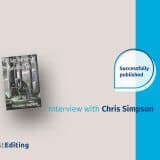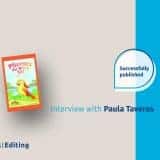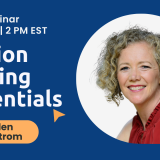
A great fiction story is made up of a collection of great scenes that flow smoothly from one to another.
Learn to identify the important story elements of fiction writing so that you never overlook an essential component of your book.
When you become familiar with the story elements, you also learn the basics of self-editing. With this understanding, you can achieve a better return on investment from your professional book editor.
Discover how to use and edit the 38 Story Elements of your story to create and link great scenes, turning those scenes into a powerful story. Join professional Story Coach Editors JoEllen and Kristina as they evaluate the major components of a fiction story and share how you can improve your writing now.
In The 38 Story Elements of Fiction Series, we will discuss:
- Why each Story Element is important for creating a powerful story
- How to use the Story Elements successfully in your writing
- What professional Story Coach Editor advice can you apply TODAY
- What are the primary Sections of your manuscript that you need to focus on?
– Character
– Plot
– Setting - What is your Story Coach Editor considering in each of these sections?
Click Subscribe so you don’t miss a single episode on how to structurally edit your story!
The 38 Elements of Story Editing
Story editing means evaluating the major components of a story.
A great story is made up of a collection of great scenes that flow smoothly from one to another.
Your StoryCoach Editor shows you how to use the Story Elements to create and link great scenes, turning those scenes into a powerful story.
Character Story Elements
Characters per Scene
The love of characters will keep readers coming back. This element gives you a quick method to see who is in each scene and evaluate if your client is controlling which characters get page time.
WATCH: CHARACTERS PER SCENE – EPISODE #01
Point of View
The point of view character for a scene is a promise to readers that they will experience that scene from that character’s perspective. Your role is to check your client is consistent with POV characters and that they are using POV effectively.
WATCH: POINT OF VIEW – EPISODE #02
POV Goal of a Character
The Point of View (POV) goal is what the POV character wants during a scene. Goals drive your story forward. If a character doesn’t have a goal, then what are they doing in the scene?
WATCH: POV Goal of a Character – EPISODE #03
Point of View Character’s Internal Goal
We relate the internal goal of the Point of View (POV) character to their own weakness. The character’s weakness hinders them. It is something they must overcome.
WATCH: Point of View Character’s Internal Goal – EPISODE #04
The Goal Related to Plot
Linking your scene’s goal to the plot of your story arc makes your characters believable. This story element enables you to trim or intensify your scenes for effectiveness.
WATCH: The Goal Related to Plot – EPISODE #05
What if the Goal Fails?
If there is nothing at stake in your scene, then the scene’s goal is not strong enough. There is no tension in the scene. Learn how to evaluate the scene. Ask yourself “what happens if the POV character fails at achieving their goal?”.
WATCH: What if the Goal Fails – EPISODE #06
Scene Impact on Point of View Character
It’s impossible to keep track of the emotional arc of a character without knowing how each scene affects that character. Check if your scene had a positive or negative impact on the Point of View (POV) character.
WATCH: Scene Impact on Point of View Character – EPISODES #07 & #08
Point of View Knowledge Gained
Knowing what the Point of View (POV) character learns in the scene helps you evaluate your character arc and plot choices.
WATCH: Point of View Knowledge Gained – EPISODE #09
Characters in Motion
Check each scene and determine if your characters are in motion. If the characters are not in motion, revise the scene with motion to add depth to your reader’s experience.
WATCH: Characters in Motion – EPISODE #10
Plot Scene Elements
Naming a Scene
Naming your scene helps you determine the purpose of the scene and quickly find scenes you want to work on.
WATCH: Naming a Scene – EPISODE #11
Purpose of a Scene
There must always be a reason why any given scene exists in the story. A scene without a purpose distracts the reader from the main story. It may even bore the reader. If a scene doesn’t drive the story forward, then ask why it is in the novel. Your may need to revise or cut the scene.
WATCH: Purpose of a Scene – EPISODE #12
Scene Opening and Closing Types
A scene can open with dialogue, thought, description, or action. Check that your client is not boring readers by starting and closing each scene the same way.
WATCH: Scene Opening and Closing Types – EPISODES #13 & #14
How Anchor a Scene
Leaving a reader adrift is never a good idea. The start of a new scene means the POV has changed, the setting has changed, or the time has changed, hence every scene must be anchored in POV, setting, and time.
WATCH: How Anchor a Scene – EPISODE #16
Entry and Exit Hooks
Grabbing the reader’s attention with a great scene hook will keep them reading the story. Evaluate each scene opening and determine if there is an entry hook.
Leave the reader wanting more—and they’ll start the next chapter! Evaluate the ending of each scene and determine if there is an exit hook.
WATCH: Entry and Exit Hooks – EPISODES #17 & #18
Differentiate Tension From Conflict
In this episode of our continuing series on the 38 story elements, Kristina Stanley from Fictionary joins JoEllen Nordstrom to talk about the difference between tension and conflict.
A lot of people struggle with the difference between them, so let’s learn about them and see how they can enhance your writing right now.
WATCH: Differentiate Tension From Conflict – EPISODES #19 & #20
Revelation
Whenever a character learns new information, they should make a decision or change their course of action. Discover how to use the element “Revelation” in a fiction story and learn how you can improve your writing now.
WATCH: Revelation – EPISODE #21
Backstory
We discussed revelation and its importance in writing in the previous episode. In this episode, JoEllen Nordstrom is joined by Kristina Stanley from Fictionary to explain how to use backstory in fiction writing, its role in your tale, and how it differs from revelation.
WATCH: Backstory – EPISODE #22
Flashbacks
Flashbacks are very important to stories. Not all stories have them, and you don’t have to use them, but if you do, there are some things you want to keep in mind. Let’s describe what a flashback is and how it differs from backstory.
WATCH: Flashbacks – EPISODE #23
Middle and Climax
Every scene in your story has a beginning, middle, and end, and you, as the author, need to be in control of that as you work your way through your revisions.
WATCH: Middle and Climax – EPISODES #24 & #25
Action and Sequel Scenes
Are you using action scenes credibly in your manuscript? An action scene is where something happens, mostly written via movement and dialogue.
WATCH: Action and Sequel Scenes – EPISODE #26
Reader Knowledge Gained
Reader Knowledge Gained, it sounds like this is kind of behind the scenes. The point of this element is really to catch plot holes and inconsistencies in your stories. So reader knowledge gained is something that the reader learns, but the protagonist does not.
WATCH: Reader Knowledge Gained – EPISODE #27
Location
Choosing a location can have a big impact on writing a story. In this episode, Kristina Stanley from Fictionary is joined by JoeEllen to talk about how to use location in writing and what things to consider when editing.
Timing
Discover how to use the element “Timing” in a fiction story and learn how you can improve your writing now.
Objects
Learn why objects are significant in fiction, how they engage readers, and how you can use them right now to improve your writing
Sight
The five basic elements that make your fictional story interesting and lively are sight, sound, smell, touch, and taste. In its own way, each sense is beneficial and used in different ways. When it is associated effectively with a story, it could provide the reader a complete and whole new pleasurable experience.
Kristina Stanley from Fictionary joins us in this episode to explain how to effectively use the element of sight in crafting a story.
Smell
Learn how the sense of smell adds depth to a character in a story and how using it effectively can help improve your writing right now.
Sound
Sound creates atmosphere. When writing a novel, you can use sound to add a layer of depth to your description. This is called audible imagery, and one of its uses is to show the reader locations instead of telling them.
Taste
Taste is like all of the other senses, you want to use it in a sense that’s related to the plot. Use it to show emotion – it can trigger a memory, use it with lovers sharing intimate moments – just that you wanted to bring the scene alive but the main thing is to relate it to the story.
Touch
We’ve been through sight, smell, sound, and taste, and today we’re going to cover how to use touch to engage readers. Like the other senses, touch can do a lot to help the reader experience the story world. Bit for touch to have an emotional impact, it must be related to the plot.
Emotional Impact
We know how “EMOTIONAL IMPACT” is very important in describing in our books. This podcast tells you how you can make the ‘sense of taste’ memorable and how we should be using and implementing this type of sense.
WATCH: Emotional Impact – Episode #36
Location Split
We know how “LOCATION SPLIT” is very important in describing in our books. This podcast tells you how you can make the ‘sense of taste’ memorable and how we should be using and implementing this type of sense.
WATCH – Location Split – Episode #37
Weather
Making weather interesting in your story could be a little bit boring, but our professional editors can help you look at the weather on the exciting side.



